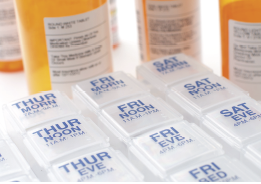IMS Health Expert Discusses State of Pharmaceutical Industry
The US pharmaceutical market saw double-digit growth in terms of prescription drug spend in 2015. Annual total spending has increased 12.3% to $411 billion as of September. Prescription growth is expected to be between 2% and 3% through 2018, according to Doug Long, MBA, vice president of industry relations, IMS Health, Inc during a session at the PBMI conference.
 Long said there have been a number of notable factors in the pharmaceutical industry in 2015. The industry has seen changes at the Centers for Medicare & Medicaid Services and the FDA and the Supreme Court upheld Obamacare. There have been price wars and exclusive launches in drugs to treat hepatitis C. The first biosimilar, Zarxio (filgrastim-sndz; Sandoz), was launched and more will follow. The industry also witnessed large patent expirations including Namenda (memantine HCI; Allergan), Abilify (ariprazole; Otsuka), and Copaxone (glatiramer acetate; Teva). Further, merger mania hit the generic companies, the major drug companies, the pharmacy benefit managers, the payers, and the retailers.
Long said there have been a number of notable factors in the pharmaceutical industry in 2015. The industry has seen changes at the Centers for Medicare & Medicaid Services and the FDA and the Supreme Court upheld Obamacare. There have been price wars and exclusive launches in drugs to treat hepatitis C. The first biosimilar, Zarxio (filgrastim-sndz; Sandoz), was launched and more will follow. The industry also witnessed large patent expirations including Namenda (memantine HCI; Allergan), Abilify (ariprazole; Otsuka), and Copaxone (glatiramer acetate; Teva). Further, merger mania hit the generic companies, the major drug companies, the pharmacy benefit managers, the payers, and the retailers.
He continued the session with a look at the specialty, brand, and generic markets. New brand spending increased by nearly $20 billion in the last 12 months, and the majority of new brand spending is on specialty medicines. The specialty drug market outpaces that of traditional medicines (23% vs 8%, respectively). Specialty drugs now account for 1% to 2% of prescriptions dispensed, but over 35% of all drug spending. Long said viral hepatitis, diabetes, oncology, and autoimmune are the fastest growing specialty segments, noting that spending on hepatitis C virus medicines increased by $8.7 billion in the last 12 months. In traditional medicines, prescriptions for diabetes medications rose 5.1% in the last 12 months, while anti-ulcerant sales declined by 13.6% following the patent expiration on Nexium (esomeprazole). Also, the 2015 flu season saw the most prescriptions in the past 6 years.
Long then turned his attention to generics, which continue to be a central part of the US pharmaceutical market. Although as of September 2015, generics only made up 9% of spending growth for the year—down from 42% in 2011—generics still account for 17% of spending and 83% of prescriptions. He noted that the US health care system has saved $1.7 trillion in the last 10 years due the availability of low-cost generics. However, one trend that might prove problematic is generic price inflation, whose causes are 3-fold, according to Long. These include increased FDA scrutiny of manufacturers leading to more quality and supply issues, customer consolidation, and fewer new product launches.
He also discussed how innovation will drive transformation of disease treatments in 2020. Patients will have greater access to breakthrough therapies, with clusters of innovation around hepatitis C, auto-immune diseases, heart disease, orphan diseases, and others by 2020. Cancer treatments represent the largest category of the 225 new medicines expected to be introduced within the next 5 years. By 2020, more than 470 drugs will be available to treat orphan diseases for the 7000 rare diseases with no or limited treatments available. While global medicine spending on orphan diseases is expected to be 1% to 2%, it is anticipated that spending on orphan diseases will be as much as 10% in developed markets such as the United States. Also, technology will enable changes to treatment protocols, and shift patient engagement, accountability, and patient-provider interaction, accelerating the adoption of behavior changes proven to improve patient adherence to treatments, he said.—Eileen Koutnik-Fotopoulos













